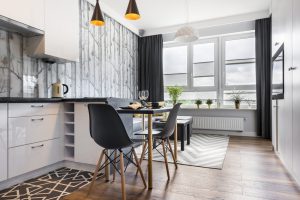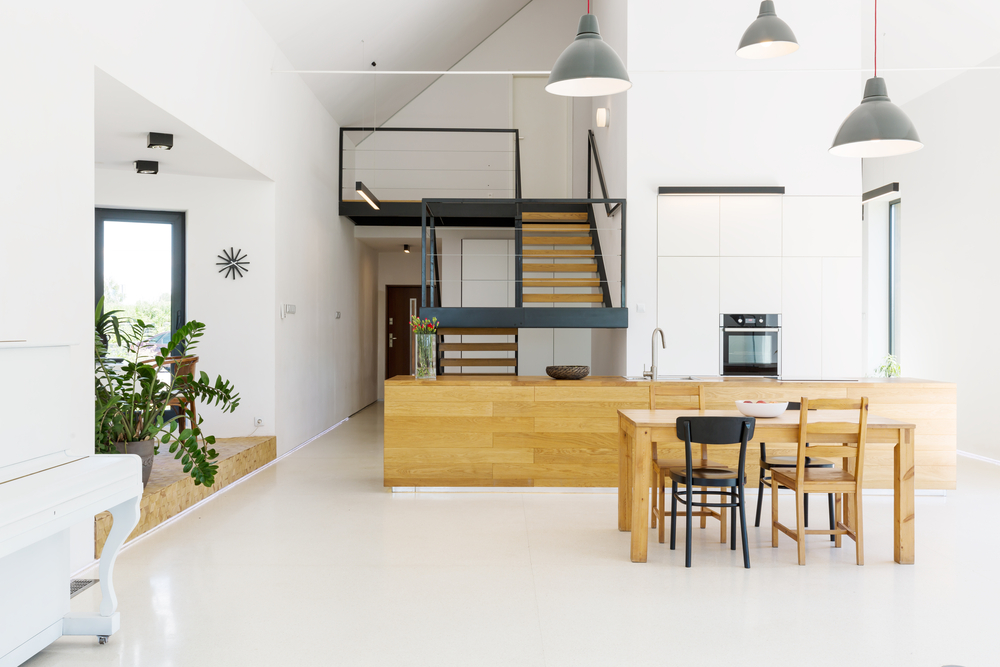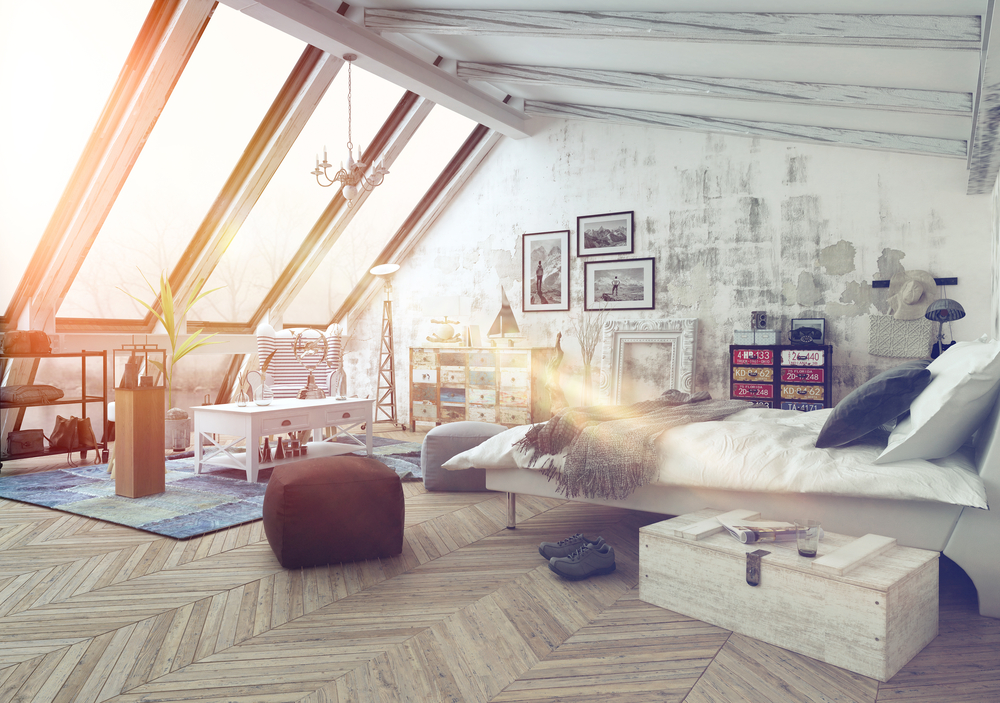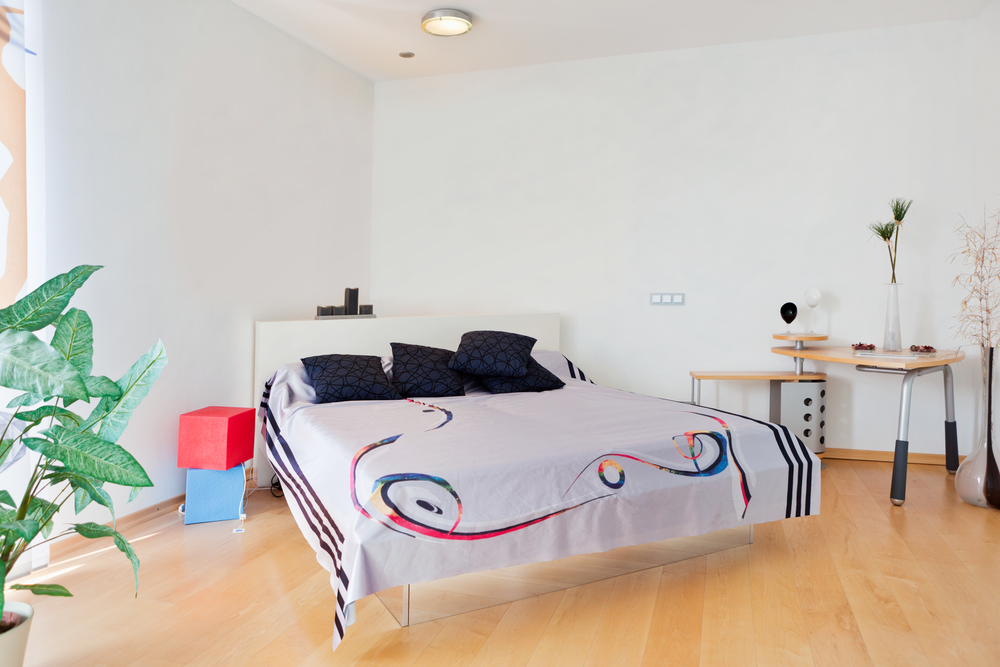How to Flawlessly Decorate Small Spaces

You could say that to decorate small spaces is an art. With so little space, it seems impossible to get everything in without cluttering the space. A little planning fixes that problem.
Think about this – there are times that you’ve seen houses with plenty of space that still look overcrowded and disorganized. However, you can put the same amount of items in a much smaller space and it feels airy and spacious.
Let’s try not to forget that most of the time, it’s not the lack of space but lack of good organization. Here are some ideas to consider when you tackle decorating a small space.
“Less is more”
This should be your mantra. With small spaces, the size of things doesn’t matter as much as the number of things.
Undoubtedly, you would like to have a little furniture in the space. If the space you want to decorate has a highly irregular shape, you may want to specially order the furniture. Doing this means you can take advantage of every free centimeter. Even those you thought were impossible to decorate.
Also, it wouldn’t hurt to choose furniture that has more than one function. For example, sofa beds, futons, trundle beds, and side tables all maximize available space. They are experts in this at IKEA.

You probably think it would be better if the furniture were small. That’s not necessarily true. Even though you can only fit a few pieces in the space, the furniture can be large. It never hurts to have storage space in a small area.
You should follow minimalist guidelines for decoration. This is the best way to get open and organized spaces. Although the minimalist approach works well in any home, for those that are smaller it is 100% guaranteed.
Remover barriers when you decorate small spaces
If your floor, house or apartment is small, normally the things in the room are small too. So, sometimes, it’s a good idea to get rid of barriers. For example, you can get rid of partitions in the room. You could also knock out a wall to make two rooms into a larger one.
This is what happens with open kitchens, also known as American kitchens. These open into another room. If both the kitchen and the living room are small, opening the kitchen gives them a greater sense of spaciousness.
When doing this, it is very important to maintain visual continuity. For example, you have the same tiles on the floor in both the kitchen and the living room.
The greatest example of having open space in a home is living in a loft. Everything is in the same room, except for the bathroom, of course. Although lofts are often quite small, they seem larger.
When you have open rooms, not only do you get more of a sense of spaciousness but natural light also filters in more easily. We’ll talk about this in the next section.

The importance of good lighting
Often small spaces don’t have many windows. This can make us feel like we’re trapped and maybe cause a bit of claustrophobia. Therefore, it becomes very important to take advantage of any natural light there may be. One way to add light to spaces that don’t have windows is to use partitions.
Also, don’t use curtains that are too thick. You don’t want them to block out even more light. Another option is to place mirrors in strategic places. In doing so you can change the feel of the space without losing any light. Let’s not forget that natural light has a mood-boosting effect and makes you more comfortable in your home.
Even so, it may be necessary to use artificial light. But don’t worry. You can also create a warm and welcoming space with that too. You can manage the brightness of the lighting to fit any mood or moment, especially if you install a dimmer switch.

Take advantage of every available centimeter
Finally, keep in mind that if you use the space to its fullest potential, anything is possible. You just have to think about how to distribute everything. Using spaces that you normally wouldn’t use like corners, walls, terraces, and balconies becomes valuable in small spaces.
For example, you may want to utilize corners by choosing a corner sofa or placing an end table there. Those are always useful and very practical.
As for the walls, you do have to leave some of the area free so that you don’t create a crowded atmosphere. But don’t neglect them too much. You can use shelves or hanging decorations to accent them. You can store things on any shelving you install. Remember, lack of storage is quite common in small spaces.
If you are lucky enough to have a terrace or balcony, you can close them in. This may give a living room, kitchen or bedroom a bit more space that you can use year-round instead of just when it’s warm.

Conclusion
As you can see when you decorate small spaces, the key is to create space where there seems to be none. You can even replace swinging doors with sliding ones. You can gain at least 1 m2 by doing this.
If you follow these ideas, you will have a small but warm, neat and cozy home. And you can have everything you want in it. You just need to carefully plan and organize when you decorate small spaces.
You could say that to decorate small spaces is an art. With so little space, it seems impossible to get everything in without cluttering the space. A little planning fixes that problem.
Think about this – there are times that you’ve seen houses with plenty of space that still look overcrowded and disorganized. However, you can put the same amount of items in a much smaller space and it feels airy and spacious.
Let’s try not to forget that most of the time, it’s not the lack of space but lack of good organization. Here are some ideas to consider when you tackle decorating a small space.
“Less is more”
This should be your mantra. With small spaces, the size of things doesn’t matter as much as the number of things.
Undoubtedly, you would like to have a little furniture in the space. If the space you want to decorate has a highly irregular shape, you may want to specially order the furniture. Doing this means you can take advantage of every free centimeter. Even those you thought were impossible to decorate.
Also, it wouldn’t hurt to choose furniture that has more than one function. For example, sofa beds, futons, trundle beds, and side tables all maximize available space. They are experts in this at IKEA.

You probably think it would be better if the furniture were small. That’s not necessarily true. Even though you can only fit a few pieces in the space, the furniture can be large. It never hurts to have storage space in a small area.
You should follow minimalist guidelines for decoration. This is the best way to get open and organized spaces. Although the minimalist approach works well in any home, for those that are smaller it is 100% guaranteed.
Remover barriers when you decorate small spaces
If your floor, house or apartment is small, normally the things in the room are small too. So, sometimes, it’s a good idea to get rid of barriers. For example, you can get rid of partitions in the room. You could also knock out a wall to make two rooms into a larger one.
This is what happens with open kitchens, also known as American kitchens. These open into another room. If both the kitchen and the living room are small, opening the kitchen gives them a greater sense of spaciousness.
When doing this, it is very important to maintain visual continuity. For example, you have the same tiles on the floor in both the kitchen and the living room.
The greatest example of having open space in a home is living in a loft. Everything is in the same room, except for the bathroom, of course. Although lofts are often quite small, they seem larger.
When you have open rooms, not only do you get more of a sense of spaciousness but natural light also filters in more easily. We’ll talk about this in the next section.

The importance of good lighting
Often small spaces don’t have many windows. This can make us feel like we’re trapped and maybe cause a bit of claustrophobia. Therefore, it becomes very important to take advantage of any natural light there may be. One way to add light to spaces that don’t have windows is to use partitions.
Also, don’t use curtains that are too thick. You don’t want them to block out even more light. Another option is to place mirrors in strategic places. In doing so you can change the feel of the space without losing any light. Let’s not forget that natural light has a mood-boosting effect and makes you more comfortable in your home.
Even so, it may be necessary to use artificial light. But don’t worry. You can also create a warm and welcoming space with that too. You can manage the brightness of the lighting to fit any mood or moment, especially if you install a dimmer switch.

Take advantage of every available centimeter
Finally, keep in mind that if you use the space to its fullest potential, anything is possible. You just have to think about how to distribute everything. Using spaces that you normally wouldn’t use like corners, walls, terraces, and balconies becomes valuable in small spaces.
For example, you may want to utilize corners by choosing a corner sofa or placing an end table there. Those are always useful and very practical.
As for the walls, you do have to leave some of the area free so that you don’t create a crowded atmosphere. But don’t neglect them too much. You can use shelves or hanging decorations to accent them. You can store things on any shelving you install. Remember, lack of storage is quite common in small spaces.
If you are lucky enough to have a terrace or balcony, you can close them in. This may give a living room, kitchen or bedroom a bit more space that you can use year-round instead of just when it’s warm.

Conclusion
As you can see when you decorate small spaces, the key is to create space where there seems to be none. You can even replace swinging doors with sliding ones. You can gain at least 1 m2 by doing this.
If you follow these ideas, you will have a small but warm, neat and cozy home. And you can have everything you want in it. You just need to carefully plan and organize when you decorate small spaces.







